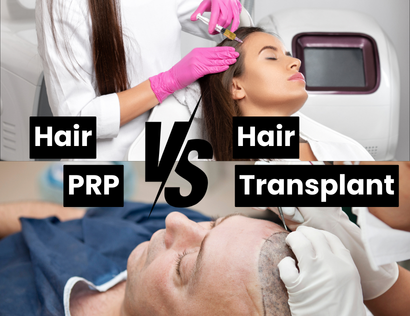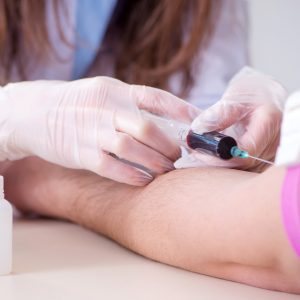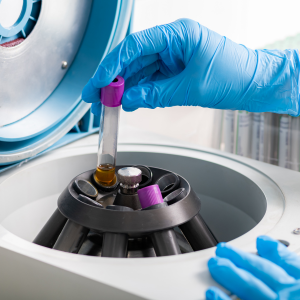
Hair PRP vs. Hair Transplants: Which Is Right for You?
Hair loss is a common concern that affects millions of people worldwide, impacting their confidence and self-esteem. Advances in medical science have introduced two popular solutions for hair restoration: Platelet-Rich Plasma (PRP) therapy and hair transplants. Both options have proven effective but cater to different needs and situations. In this blog, we will compare these treatments in depth to help you determine which might be the best choice for you.
Understanding Hair PRP Therapy
Platelet-Rich Plasma (PRP) therapy is a non-surgical procedure that uses your body’s own blood to stimulate hair growth. PRP contains growth factors that promote tissue repair and regeneration, making it a natural option for individuals experiencing hair thinning or mild hair loss.
How PRP Works:
Process 1: Blood Collection

A small sample of your blood is drawn, typically from your arm, using a needle. This is similar to a routine blood test.
Process 2: Processing

The collected blood is placed in a centrifuge, a machine that spins the blood at high speed. This separates the components of the blood, isolating the platelet-rich plasma (PRP) from the other elements, such as red blood cells and plasma.
Process 3: Application
Once the PRP is prepared, it is carefully injected into the scalp in areas where hair thinning or hair loss is occurring. The platelets in the PRP release growth factors that stimulate hair follicles, promoting hair regrowth and improving hair health.
Benefits of PRP Therapy:
Non-Invasive: Requires no surgery or significant downtime.
Natural Stimulation: Use your own platelets to encourage hair growth.
Minimal Risk: Low chance of allergic reactions or complications.
Quick Sessions: Each treatment typically takes 30 to 60 minutes.
Ideal Candidates for PRP:
Individuals with early-stage hair loss or thinning hair.
People looking for a preventative approach to hair loss.
Those unwilling or unable to undergo surgery.
Understanding Hair Transplant:
Hair transplantation is a surgical procedure that involves moving hair follicles from one part of the body (donor area) to the balding or thinning area (recipient area). The two main techniques are Follicular Unit Transplantation (FUT) and Follicular Unit Extraction (FUE).
How Hair Transplants Work:
Understanding Hair Transplant Basics
A hair transplant is a minimally invasive surgical procedure where hair follicles are moved from a donor area (usually the back or sides of the scalp) to areas experiencing thinning or baldness. The transplanted follicles continue to grow hair naturally in their new location.
2. Types of Hair Transplant Techniques
The two primary methods for hair transplantation are:
a. Follicular Unit Transplantation (FUT):
Also known as the strip method, this involves:
Removing a strip of skin containing hair follicles from the donor area.
Dissecting the strip into individual follicular units under a microscope.
Implanting these units into the bald or thinning area.
Advantages:
High graft yield for extensive hair loss.
Cost-effective for larger areas.
Disadvantages:
Linear scar at the donor site.
Longer recovery time.
b. Follicular Unit Extraction (FUE):
This method involves:
Extracting individual hair follicles directly from the donor area using a small punch tool.
Transplanting these follicles into the recipient area.
Advantages:
Minimal scarring, making it suitable for short hairstyles.
Faster healing time compared to FUT.
Disadvantages:
Time-intensive for larger areas.
Costlier than FUT in some cases.
3. The Step-by-Step Procedure
Step 1: Consultation and Planning
The process begins with a detailed consultation with a hair restoration specialist.
The doctor examines the scalp, assesses hair loss severity, and determines the suitability for the procedure.
A personalized treatment plan is created, including the type of transplant (FUE or FUT), the number of grafts required, and the design of the new hairline.
Step 2: Preparing the Donor and Recipient Areas
The donor area is trimmed and sterilized.
Local anesthesia is administered to numb both the donor and recipient areas for a pain-free experience.
Step 3: Graft Harvesting
For FUT, a strip of hair-bearing skin is removed.
For FUE, individual hair follicles are extracted using specialized tools.
Step 4: Preparing the Grafts
The harvested follicles are carefully prepared and sorted under a microscope to ensure they remain healthy and ready for transplantation.
Step 5: Creating Recipient Sites
Tiny incisions are made in the recipient area using a fine needle or blade.
The angle, direction, and density of the incisions are meticulously planned to achieve a natural look.
Step 6: Implanting the Grafts
The prepared hair follicles are implanted into the recipient sites with precision.
Step 7: Post-Procedure Care
After the procedure, the scalp is bandaged, and instructions for aftercare are provided.
Most patients can return to routine activities within a few days.
4. Recovery and Results
Recovery Timeline:
1–2 Weeks Post-Procedure: Scabbing and mild swelling may occur; scabs naturally fall off.
1–3 Months: Some transplanted hair may shed, which is normal as new hair growth begins.
6–12 Months: Noticeable hair growth and fuller results.
12–18 Months: Final results with thick, natural-looking hair.
Factors Affecting Results:
The skill of the surgeon.
Proper aftercare.
Individual hair growth patterns.
Benefits of Hair Transplants:
Permanent Results: Offers long-lasting hair restoration.
Customized Solution: Hair density and placement are tailored to your preferences.
Treats Advanced Hair Loss: Suitable for individuals with significant baldness.
Ideal Candidates for Hair Transplants:
– Those with substantial hair loss or balding.
– Individuals with a sufficient supply of donor hair.
– People seeking permanent results.
Key Differences Between PRP and Hair Transplants
– Procedure Type:
– PRP Therapy: Non-surgical.
– Hair Transplants: Surgical.
– Target Audience:
– PRP Therapy: Suitable for early-stage hair loss.
– Hair Transplants: Effective for advanced hair loss.
– Results Timeline:
– PRP Therapy: Gradual improvement over several sessions.
– Hair Transplants: Noticeable results in 6-12 months.
– Downtime:
– PRP Therapy: Minimal downtime.
– Hair Transplants: Requires recovery period.
– Longevity:
– PRP Therapy: Maintenance sessions needed.
– Hair Transplants: Permanent solution.
– Cost:
– PRP Therapy: Generally lower cost.
– Hair Transplants: Higher upfront cost.
– Risk of Complications:
– PRP Therapy: Low.
– Hair Transplants: Moderate, depending on surgery and care.
How to Decide Which Is Right for You
Your choice between PRP therapy and hair transplants depends on several factors, including the extent of your hair loss, your budget, and your personal preferences. Here are some considerations to help you decide:
1. Extent of Hair Loss
– If you have mild to moderate thinning or early-stage hair loss, PRP therapy may be sufficient to restore volume and density.
– For severe hair loss or bald patches, hair transplants are more effective and provide a lasting solution.
2. Desired Results
– PRP offers gradual improvement and requires ongoing sessions to maintain results.
– Hair transplants provide a one-time, permanent fix with noticeable changes.
3. Budget and Time
– PRP is typically less expensive upfront but may require repeated sessions, adding to the overall cost.
– Hair transplants involve a higher initial cost but usually require no further treatments for the same area.
4. Tolerance for Downtime
– PRP has minimal downtime, making it ideal for those with busy lifestyles.
– Hair transplants require a recovery period and careful post-surgical care.
5. Risk Tolerance
– PRP has a low risk of complications since it uses your own blood.
– Hair transplants carry surgical risks like infection, scarring, or poor graft survival.
Combining PRP and Hair Transplants
In some cases, combining PRP therapy with hair transplants can enhance results. PRP can be used post-transplant to promote faster healing, increase graft survival rates, and stimulate overall hair growth. Discussing this option with a hair restoration specialist can help you achieve optimal outcomes.
Both PRP therapy and hair transplants are effective solutions for hair loss, but they serve different purposes and are suited for different individuals. PRP is an excellent choice for those in the early stages of hair loss, while hair transplants are ideal for those seeking permanent results for advanced baldness. Understanding your hair loss pattern, treatment goals, and lifestyle can guide your decision.
Consulting a qualified hair restoration specialist is crucial to determine the best option for your specific needs. Whether you choose PRP therapy, hair transplants, or a combination of both, taking proactive steps to address hair loss can help restore not only your hair but also your confidence.



Leave A Comment